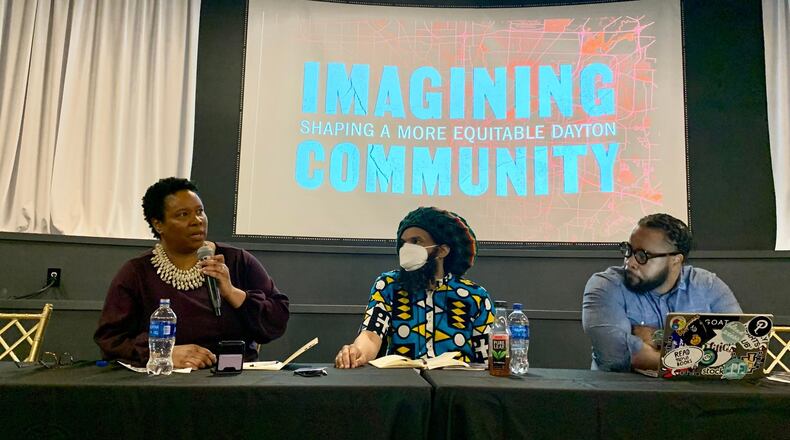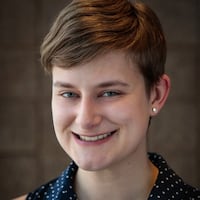Why is it that majority-Black Dayton neighborhoods like Westwood are a stone’s throw from majority-white Oakwood, where residents have vastly different educational opportunities, access to health care and access to fresh food? That’s what Amaha Sellassie, a community organizer and sociologist at Sinclair Community College, wants community members to think about.
To answer that question, Sellassie and other local scholars point to racial housing segregation designed and enforced by banks and the government for decades in the 1900s. They’re examining this legacy in our region and solutions at a two-day conference.
The Imagining Community Symposium on Thursday and Friday at the Dayton Arcade brings together over 100 speakers and panelists, including artists, community organizers, academics, faith leaders and business executives. The event, sponsored by the University of Dayton, Sinclair Community College and others, is free and open to the public.
Angela Rahman, the community development manager at the city of Kettering, said during the audience comments section of a panel early Thursday morning that too often people get focused on fixing the symptoms of racial inequality without looking at the bigger picture or addressing the root causes.
“Some of our bigger issues are segregation, which still exists in housing and schools, and then that feeds into the perception of different and different not being equal,” she said.
Organizers of the symposium were inspired by the traveling Undesign the Redline exhibit, which is on display during the conference in the glass rotunda of the Arcade. The exhibit covers the history of racial segregation nationally and in the Dayton region, and includes local maps and residents’ stories. The exhibit’s namesake, redlining, was a practice by the federal government and banks from the 1930s into the 1970s that systematically denied loans or charged higher interest rates in minority neighborhoods. This, along with other racist housing practices, created lasting segregation and racial inequalities in cities.
The Dayton metro area continues to be among the most racially segregated in the country, and as a result, many Black residents fare worse on many measures of health, economics and education than their white neighbors, many local experts have said.
During the opening panel of the symposium, local Black scholar-activists were asked to describe the current state of equity in Dayton.
“Dayton is failing,” said Faheem Curtis-Khidr, a history professor at Sinclair Community College. “Does Dayton have the potential to do better? Absolutely. I think spaces like this prove that..”
Curtis-Khidr said it’s unfortunately a small part of the greater Dayton community that’s consistently working on equity.
Leslie Picca, a University of Dayton sociology professor and one of the symposium organizers, said more than 500 people preregistered for the conference, and she was pleased with the turnout for the inaugural event.
But she and others involved in the symposium hope this will lay the groundwork for many conversations to come. Because the history of racial discrimination in the U.S. is recent history and continues in less overt ways to this day, said Chad Sloss, a sociology professor at Sinclair Community College.
Credit: Jordan Laird
Credit: Jordan Laird
Sloss was part of panel Thursday that discussed how Black people have been continually blocked from home ownership and the American dream.
“Yes, redlining is done,” he said. “But we still see the implications of it, we see the impact. That is forever. But we also still see some things that are coming in, that are further perpetuating the disproportionality between white families and Black families.”
Several exhibits on display during the conference in the rotunda examine and map the disparities between majority-white and non-white communities, including in education and housing. Speakers at the symposium are discussing topics such as health care, home ownership, parks, voting rights, removal of indigenous Ohioans and more.
About the Path Foward
Our team of investigative reporters digs into what you identified as pressing issues facing our community. The Path Forward project seeks solutions to these problems by investigating race and equity in the Dayton region. Follow our work at DaytonDailyNews.com/path-forward.
Credit: Jordan Laird
Credit: Jordan Laird
About the Author




